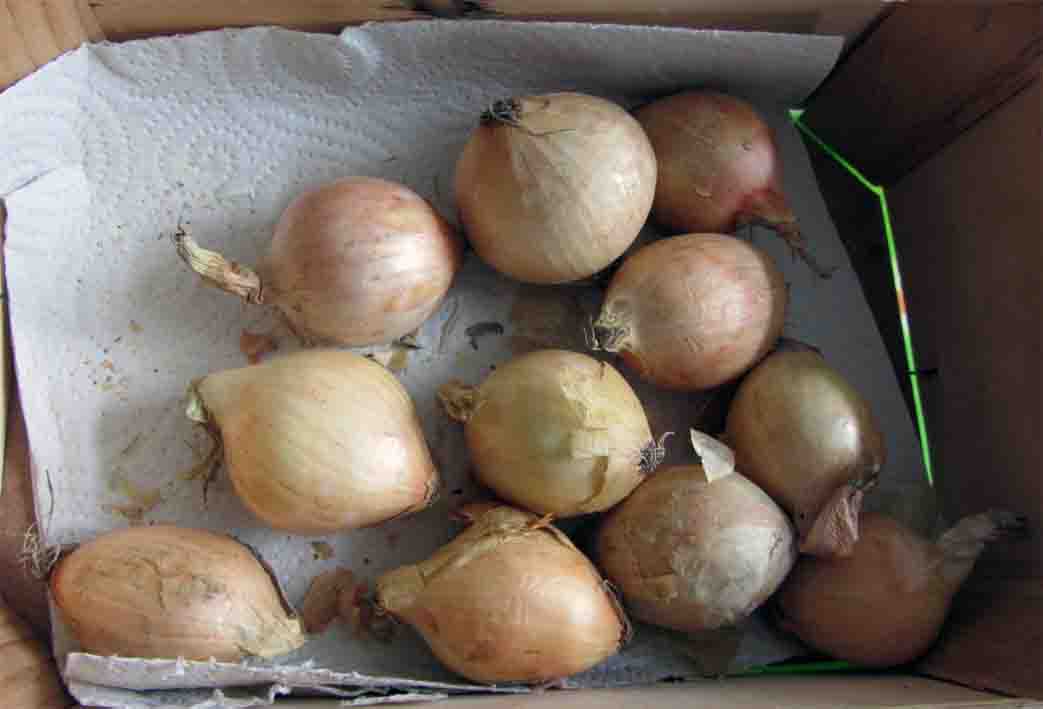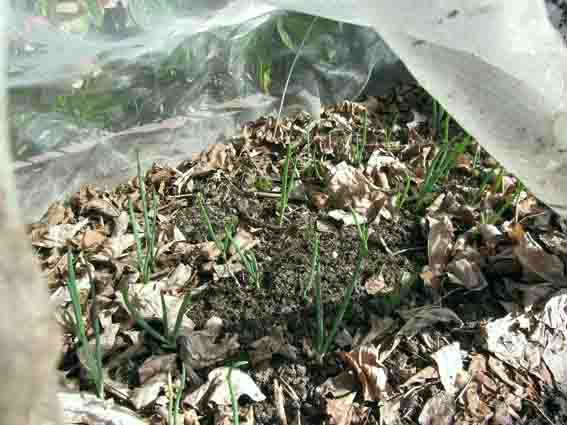Onions
In German, there is only one word for the underground storage organs of plants and their above-ground green parts: onions. It does not specify whether it refers to cooking onions, flower bulbs, or green onions. Therefore, I will use the terms: summer cooking onions, winter cooking onions, and leek onions to clarify what I mean.
Before deciding to plant summer onions in your own garden, it is essential to check if there is a storage option for the harvest. The space should be dry, frost-free, but cool and dark. In today's apartments and houses without a pantry or storage cellar, such a place is usually not available. Garden sheds or garages are often not frost-free. Freezing, like many other vegetables, is also not an option, as they lose their flavor. To preserve this flavor, commercial onions are shock-frozen with liquid nitrogen; this cannot be replicated at home.
When the onions are mature and the foliage has died back, they have to be removed from the ground. Otherwise, they will start to sprout again, depleting themselves in the process and beginning to flower. As food onions, they are certainly unusable.
Without a storage option, it is more practical to grow only green onions for immediate use.
When the onions are mature and the foliage has died back, they have to be removed from the ground. Otherwise, they will start to sprout again, depleting themselves in the process and beginning to flower. As food onions, they are certainly unusable.
Without a storage option, it is more practical to grow only green onions for immediate use.
.
©Hannelore Goos 2025
Planting onions
In Germany, cooking onions are typically planted as sets in the ground. (In England and North America, they are mostly sown, and sets are rare and expensive). Small onion sets are available in spring at seed shops, construction stores, and supermarkets for just a few euros. However, it is worth choosing good quality, even if it costs a bit more. Overaged sets do not produce bulbs but instead grow a flower stalk, making them suitable only for flower beds.
Onions are heavy feeders and require well-fertilized soil enriched with compost, where no onion plants have grown for at least 3 years.

Yellow summer cooking onions
For the summer harvest, the small onions are planted in March in well-prepared soil, leaving the tips just above the surface. With enough water and fertilizer, strong onions will grow by August. When the leaves start to die back, watering should stop to ensure they become steady to be stored properly. Once all the leaves are dry, they are pulled from the ground and hung up to dry further.
Winter onions are planted about 10 cm (~ 4 ") deep in October or November. It is advisable to mulch with loose leaves, allowing the shoots to come through. (see image) From the end of March, they can be harvested as green spring onions as needed.
As having gardened all my life in Germany I don’t have experience in sowing onions.
Winter onions are planted about 10 cm (~ 4 ") deep in October or November. It is advisable to mulch with loose leaves, allowing the shoots to come through. (see image) From the end of March, they can be harvested as green spring onions as needed.
As having gardened all my life in Germany I don’t have experience in sowing onions.

Winter onions in March with the onion net lifted
The onion fly
The biggest enemy of all onion plants is the onion fly. It pierces them, lays its eggs inside, and the hatching larvae eat the onion and its greens from the inside. Due to climate change, there are now 4 generations of onion flies per year instead of the previous 2. The only solution is a dense, fine-mesh net as shown above.
The advice to use a mixed culture with carrots cuts both ways, because just when the onions need to dry out, the carrots require a lot of water to grow thick.
The biggest enemy of all onion plants is the onion fly. It pierces them, lays its eggs inside, and the hatching larvae eat the onion and its greens from the inside. Due to climate change, there are now 4 generations of onion flies per year instead of the previous 2. The only solution is a dense, fine-mesh net as shown above.
The advice to use a mixed culture with carrots cuts both ways, because just when the onions need to dry out, the carrots require a lot of water to grow thick.